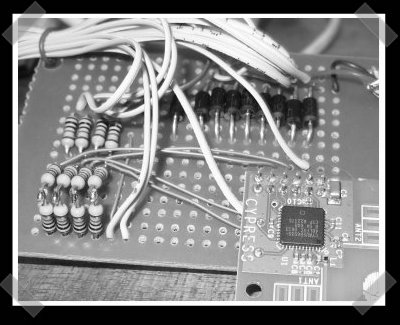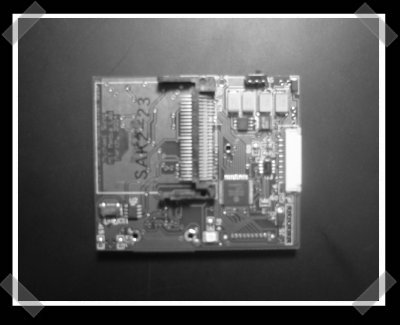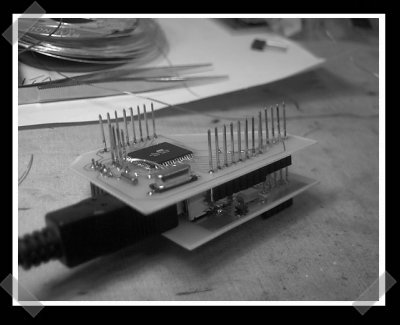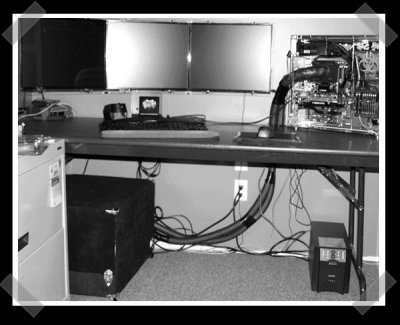
[Syn Phishus] presented a pretty interesting talk. At $former_company he prepared and executed a rogue internal exercise designed to heighten awareness of phishing scams. (That is, attempts to gather personal information from users with trickery.) After noting a certain lack of effort on the part of security policy implementation, he put together an official looking email, set up a simple phishing site that didn’t actually store any collected information and set loose the dogs of war. OK, he actually sent it to a select group within the company without warning anyone else ahead of time. He purposely didn’t store any of the results to protect the foolish, but he estimates that maybe 10% of the recipients fell for it.
Author: Will O'Brien805 Articles
DIY 2.4ghz Spectrum Analyser

This project got some blog love last year, but it slipped past my radar. [jhecker] built a parallel port interfaced device based on a Cypress 2.4ghz transceiver module. The module is pretty complete, so as long as you can wield a soldering iron, you can pull this one off. The module is pretty cheap, so it could be just the thing for building your own signal detector.
[Ed Note, Stardate 2018: There seems to be some linkrot. Try this link instead.]
Shmoocon’s Coming

Just prepping up a bit before this spring’s Shmoocon. Things will definitely be colder this round, so bring your cold weather gear if don’t want to arrive in the form of a human popsicle. I’m a fan of Shmoo’s organization tactics. Running several single session talks keeps me from missing one great talk to attend another. [h1kari]’s GSM talk promises to be interesting. Not to mention VOIP penetration testing and solid state hard drive recovery. [Eliot] and I will see you there. Don’t worry, we’ll be reporting back for the guys that have to miss out this year
Swiss Army Knife 2 Project Board

[Micheal] developed this board to be the heart of an even bigger sensor interface project. I think the design might come in handy for someone looking for more flexibility than even an Arduino or similar projects offer. The SAK2 uses a 40Mhz PIC 18F452, step down power regulation, RF transceiver and plenty of I/O ports. Firmware, schematics and BOM are all provided.
Scrying EM Fields

I’m still trying to wrap my head around this one. The idea behind scrying is to reveal hidden data – i.e. electromagnetic fields within a structure. (Like those created by a metal building/computers/etc) It does have other uses besides artistic – it can be used to analyse the 2.4ghz spectrum among other things. It looks like an interesting project, despite the odd description. (Lets just say that it’s an eccentric bit of reading)
Window Unit Turned PC Water Cooler

I almost passed this one up because it was shotgunned across a few blogs, but it would be a shame to pass up on a good hack. [Mike] decided to use a standard window AC unit to cool the CPU in his rig. The A/C unit was modified to place the evaporation coil inside a fish tank filled with glycol/water antifreeze coolant. To cool the CPU, he used a normal water block, but insulated the coolant lines between the cooling unit and the machine. That should give you the idea. For more details, have fun deciphering his project in pictures. [via]
Bonus: [Johnny] sent in the NASA workmenship guide. It’s pretty interesting to see what the space boys require for their electronics work.
EeePC Inverse Video Scaling

[Tracker] sent in this handy software hack for the eeePC. The idea is to scale higher resolutions like 1024×768 down to the native 800×480 screen resolution. His post tells you how (but requires windows) and helpfully provides the required downloadable driver. I wonder if he’s seen this video showing up 1600×900?
(update: fixed the missing video link.)










